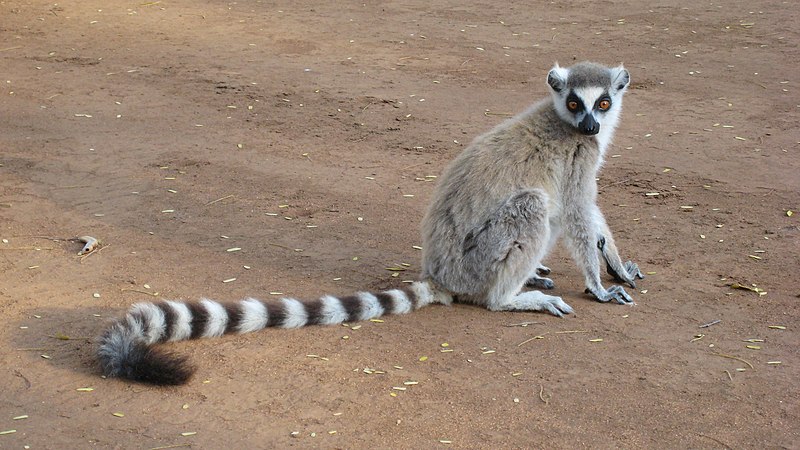
This got funded: From Sciencedaily:
Chitchat, small talk could serve an evolutionary need to bond with others
Well yes, but what is the word “evolutionary” doing in this sentence? A real science comes bolstered with specifics, not speculations.
Many of us expect that our early ancestors gossiped plenty. But it is precisely what has not evolved that causes us to think so. Anyway,
Princeton University researchers report in the journal Animal Behaviour that social primates use vocalizations far more selectively than scientists previously thought. They found that ringtailed lemurs (Lemur catta) living in groups primarily call and respond to the individuals with which they have close relationships. While grooming is a common social-bonding experience for lemurs and other primates, the researchers found that lemurs reserved vocal exchanges for the animals that they groomed most frequently.
Of course. Most animals make social noise only when they feel safe (noise used as a warning or defensive weapon is not “social”).
It figures they’d make it more often when they feel safer and want to stay close.
Lemurs vocalize to essentially “groom-at-a-distance” and keep in touch when the group members they’re closest with get separated such as when foraging for food, said first author Ipek Kulahci, who received her Ph.D. in ecology and evolutionary biology from Princeton.
“Our results indicate that when animals respond to each other’s vocalizations, they are in fact also working on maintaining their social bonds,” said Kulahci, who worked with her co-authors and doctoral advisers Asif Ghazanfar, a professor of psychology and the Princeton Neuroscience Institute, and Daniel Rubenstein, the Class of 1877 Professor of Zoology and professor of ecology and evolutionary biology.
Right, but responding and maintaining social bonds amount to the same thing, really.
The findings could have implications for how scientists understand the evolution of primate vocalizations and human speech, Ghazanfar explained. Existing theories of language evolution suggest that vocal exchanges between primates evolved with group size, he said. As group size increased, grooming to form social bonds became too time consuming, so speech developed to save time while still expressing familiarity.

The Princeton research suggests that talking, even just casually, is an evolutionary tool for establishing closeness, Ghazanfar said.
Closeness? Talking can either establish or prevent closeness, depending on the information conveyed. But the lemurs are not “talking.” And what is the word “evolutionary” doing in the sentence? Take it out and nothing is left but a commonplace observation with all the rest to be inferred, and some lemurs thrown in:
“Talking is a social lubricant, not necessarily done to convey information, but to establish familiarity,” he said. “I think these vocalizations are equivalent to the chitchat that we do. People think that conversations are like exchanging mini-lectures full of information. But most of the time we have conversations and forget them when we’re done because they’re performing a purely social function.”
Ah, now we have it. Talking is not necessarily done to convey information. Never mind that gossip is information, pure and simple, and is by far the most popular form of chitchat among humans.
Therefore lemurs’ vocal exchanges help explain why humans converse socially?
The lemurs’ use of grooming and vocalization to establish greater levels of familiarity could help scientists understand how forms of communication are interrelated, Rubenstein said. Like lemurs, humans interact using various verbal and physical actions that are complementary and contextual.
“The use of different channels of communication is a big deal and it is something we humans do all the time,” Rubenstein said.
More.
In short, while lemurs are interesting, there is nothing to be learned from them in particular that will help us understand human communication.
That’s the obvious conclusion, so why isn’t it publishable? An why is th nonsense above publishable?
See also: What has naturalism done for science? Introducing “Science Fictions”
and
Why evolutionary psychology is nonsense
Follow UD News at Twitter!
Here’s the abstract:
Vocal exchanges are predicted to serve a social bonding function by allowing conspecifics to ‘groom-at-a-distance’. If vocalizations play a role in bonding, then they should be mainly exchanged between the socially bonded group members, and thus display high social selectivity that characterizes other affiliative behaviours such as grooming. However, whether or not vocal exchanges are driven by social bonds remains unclear. We investigated vocal selectivity by studying the relationships between contact-calling networks and grooming networks in multiple free-ranging groups of ringtailed lemurs, Lemur catta. Lemur grooming interactions were socially selective and were directed towards only some of their group members. However, their vocal exchanges displayed even higher levels of social selectivity. Instead of exchanging vocalizations with each group member they groomed, lemurs reserved their vocal responses mainly for the group members whom they had frequently groomed. We tested this vocal selectivity through a playback experiment in which we presented lemurs’ calls to their group. Lemurs responded only to the playbacks of the conspecifics whose calls they had responded to while free-ranging, confirming that selective vocal responses do not depend on proximal (i.e. visual or olfactory) cues from the vocalizing lemur. These robust relationships between grooming and contact-calling networks in lemurs, a species that lives in small groups where grooming frequency reflects bond strength, demonstrates that vocal exchanges indicate the strong social bonds between conspecifics. Contact calls may serve a bonding function in social species by allowing the strongly bonded group members to groom-at-a-distance when they are separated from each other. (paywall) – Ipek G. Kulahci, Daniel I. Rubenstein, Asif A. Ghazanfar. Lemurs groom-at-a-distance through vocal networks. Animal Behaviour, 2015; 110: 179 DOI: 10.1016/j.anbehav.2015.09.016